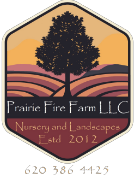Good morning! This newsletter (I don’t like calling it a newsletter, any suggestions for a better name?) is closer to the first than I want, but I want to start a bimonthly patter so…
I usually don’t plan a ton of work for January and February. Kansas winters are often pretty random and I haven’t figured out how to out guess the weather yet, so I often have plenty of time in the shop and in front of the computer. This winter I’ve been learning about a product called biochar. I’ll save the backstory on why I went down that particular rabbit hole for another time! Biochar is made from burning organic matter in a low oxygen environment. The feedstock for the process can be crop waste or wood. Biochar is essentially an inert substance with excellent water and nutrient retention properties and makes an excellent soil amendment. I’ve ordered some bio char and will be experimenting with blending some soil mixes for use as potting soil or growing media. I plan to blend it with wheat straw fines and compost, and I’ll use it as a backfill material instead of the cotton bur compost mixed with native soil that I have been using. If all goes well, we may begin offering it for sale in bulk for a potting soil and or soil amendment.
Biochar also sequesters or stores carbon in the soil. The burning process basically removes all organic matter and gases from the feedstock. Let’s assume because I like trees that the feedstock is wood waste from trees removed to make a new development. So, we place the trees in a purpose-built burner. (Air Burners, Inc. makes a very cool piece of equipment!) The trees are burned quickly and cleanly, with no smoke due to the design of the burn chamber resulting in a 94-98% reduction in volume. A mountain of waste wood is reduced to a small pile of biochar. How cool is that? We can now put that biochar right back in the soil as we plant the new trees in the landscape of the new development. The carbon that original trees had stored was not released into the environment but locked in the biochar where it now is stored in the soil again while providing moisture retention for the new trees. Talk about an awesome circle of symbiosis! I’ve oversimplified this process, but I had to dumb it down to my level of ability to explain it! If you’re interested in learning more, call, email or shoot me a text; I’ll be happy to talk about it more. It’s amazing stuff!
I often marvel at what is possible when we work together with nature instead of against it. When I ran my nursery the old way, it seemed like I spent more time killing things than growing them. Kill this weed, kill that insect… Now I try to nurture the ground covers and insects that are beneficial and tolerate and mitigate the damage from harmful ones. My farm looks different. It’s not weed free, but my trees and I are happier!
I’m running out of paper and need to save something for next month.
Thanks for reading and let me know if you have questions or suggestions for a future post! See ya, Logan

